|

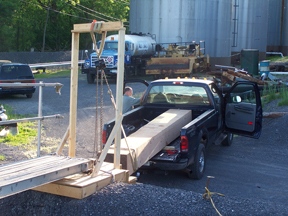
As the sun sets in Athens, Captain Reynolds arrives at the Half Moon with our new main channels, still in the form of a single, massive, solid block of wood.
|
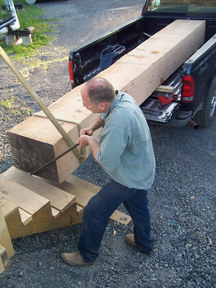
Using a little bit of brawn and a lot of engineering, Captain Reynolds and Jim Barry maneuver the white oak timber -- estimated to weigh about 2,400 pounds -- out of the bed of the truck...
|
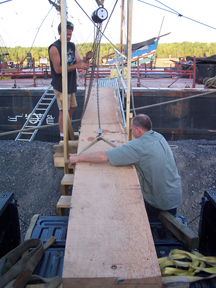
...and onto the end of our gangway. As evening settles over the land, they rest the timber in a stable position, declare victory, and call it a night.
|
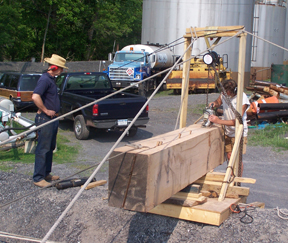
The next morning, with additional crew on hand, they go right back to work.
|
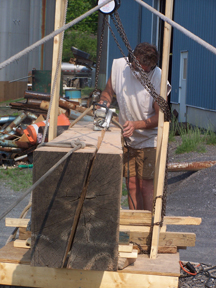
The first step is to finish sawing the block in half, reducing this behemoth to two 1,200-pound wooden wedges. Obviously, every step of the following procudure demands the utmost caution.
|
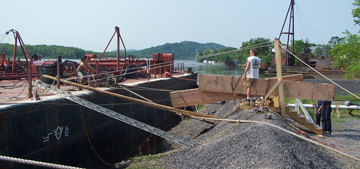
The gangway is moved out of the way to prevent it from being damaged. In its place, the crew position our white oak and live oak planks to use as guide rails.
|
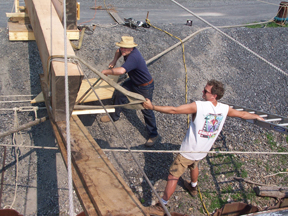
This will be a long and delicate process.
In the first stage, the crew uses a chainfall (and a lot of elbow grease) to cautiously slide the first channel across the gap.
|
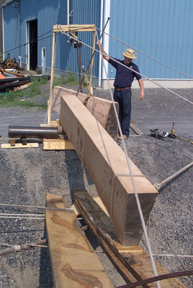 |
Mouse over to lower the channel. |
To keep the channels stable, Captain Reynolds takes command as we carefully lower them onto their broader sides.
|
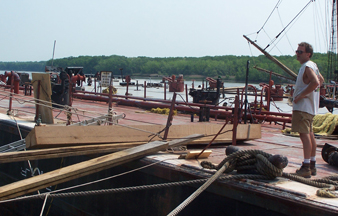
When a channel has been maneuvered onto the guide rail and is stable, it's time for stage two:
|
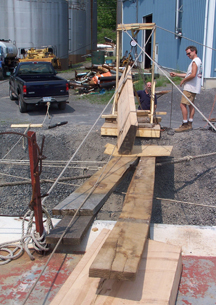
One at a time, we harness the channels to the back of a heavy-duty pickup truck (borrowed from Chris Gallagher, a longtime supporter of the ship). With enough horsepower, the channels slide right across the gap and onto the barges.
|
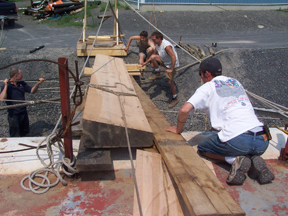
Getting the channels to cooperate still requires some finesse and wrangling, of course.
|
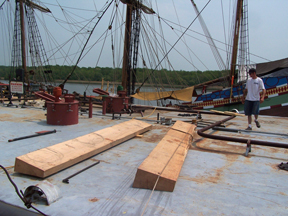
Eventually, the crew muscles the channels into position on our floating workshop. Here, these wedges will be carved down into their final shape, the waiting hardware will be installed, and the new channels will be affixed to the hull.
|
|
|
|